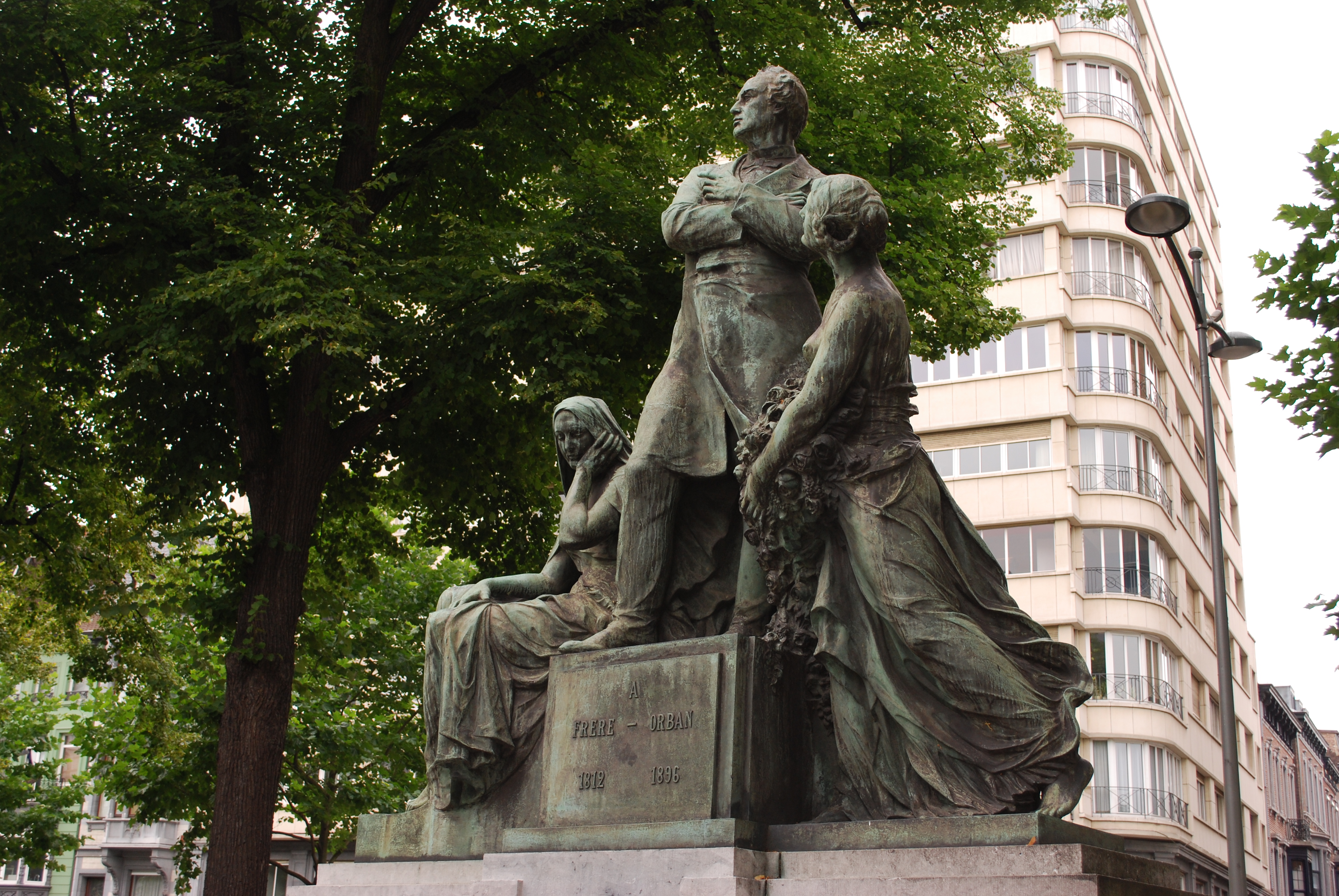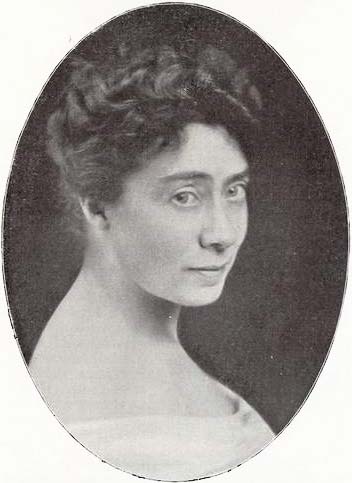|
Paul Du Bois
Paul Du Bois (; 1859–1938) was a Belgian sculptor and medalist, born in Aywaille, and died in Uccle, a municipality of Brussels (Belgium). Du Bois was a student of Eugène Simonis and Charles van der Stappen. He studied from 1877 to 1883 at the Académie Royale des Beaux-Arts in Brussels and earned the distinguished Prix Godecharle in 1884. Du Bois contributed to the renewal of artistic expression in Belgium at the end of the 20th century, and was one of the founders of the art group Les XX. His own eclectic work consists of small sculptures, medals, jewelry, fine art sculpture, public monuments, and tombs. Among his most famous monumental works, located in Brussels, are the monument to Frederic de Merode on Martyrs' Square in Brussels, and the tribute to Edith Cavell and fellow nurse Marie Depage (of the RMS ''Lusitania''), the ''Four Elements'' group in the Botanical Garden of Brussels, and several sculptures in the municipality of Saint-Gilles. He was also respo ... [...More Info...] [...Related Items...] OR: [Wikipedia] [Google] [Baidu] |
20100810 Liege36
1 (one, unit, unity) is a number representing a single or the only entity. 1 is also a numerical digit and represents a single unit of counting or measurement. For example, a line segment of ''unit length'' is a line segment of length 1. In conventions of sign where zero is considered neither positive nor negative, 1 is the first and smallest positive integer. It is also sometimes considered the first of the infinite sequence of natural numbers, followed by 2, although by other definitions 1 is the second natural number, following 0. The fundamental mathematical property of 1 is to be a multiplicative identity, meaning that any number multiplied by 1 equals the same number. Most if not all properties of 1 can be deduced from this. In advanced mathematics, a multiplicative identity is often denoted 1, even if it is not a number. 1 is by convention not considered a prime number; this was not universally accepted until the mid-20th century. Additionally, 1 ... [...More Info...] [...Related Items...] OR: [Wikipedia] [Google] [Baidu] |
Marie Depage
Marie Pauline Depage (née Picard; 23 September 1872 – 7 May 1915) was a Belgian nurse, and wife of Dr Antoine Depage. She was killed in the sinking of the RMS ''Lusitania'', and she is commemorated in Belgium alongside the British nurse Edith Cavell. Early life She was born Marie Pauline Picard, in Ixelles near Brussels in Belgium, one of two daughters and two sons of the engineer Désiré Émile Picard and Julie Marie Victorine Héger. She was a niece of Professor Paul Héger and granddaughter of Constantin Héger. She married a Belgian doctor Antoine Depage on 8 August 1893. They had three sons. Her husband was a surgeon to the Belgian King Albert, and chairman of the Belgian Red Cross. He was also a founder of the International Society of Surgery (''Societe internationale de chirurgie'') in 1902. Depage showed talent in drawing and painting; after studying human anatomy, she drew illustrations of her husband's surgical work. Concerned at the antiquated nursing pra ... [...More Info...] [...Related Items...] OR: [Wikipedia] [Google] [Baidu] |
People From Aywaille
A person ( : people) is a being that has certain capacities or attributes such as reason, morality, consciousness or self-consciousness, and being a part of a culturally established form of social relations such as kinship, ownership of property, or legal responsibility. The defining features of personhood and, consequently, what makes a person count as a person, differ widely among cultures and contexts. In addition to the question of personhood, of what makes a being count as a person to begin with, there are further questions about personal identity and self: both about what makes any particular person that particular person instead of another, and about what makes a person at one time the same person as they were or will be at another time despite any intervening changes. The plural form "people" is often used to refer to an entire nation or ethnic group (as in "a people"), and this was the original meaning of the word; it subsequently acquired its use as a plural form of p ... [...More Info...] [...Related Items...] OR: [Wikipedia] [Google] [Baidu] |
19th-century Belgian Male Artists
The 19th (nineteenth) century began on 1 January 1801 ( MDCCCI), and ended on 31 December 1900 ( MCM). The 19th century was the ninth century of the 2nd millennium. The 19th century was characterized by vast social upheaval. Slavery was abolished in much of Europe and the Americas. The First Industrial Revolution, though it began in the late 18th century, expanding beyond its British homeland for the first time during this century, particularly remaking the economies and societies of the Low Countries, the Rhineland, Northern Italy, and the Northeastern United States. A few decades later, the Second Industrial Revolution led to ever more massive urbanization and much higher levels of productivity, profit, and prosperity, a pattern that continued into the 20th century. The Islamic gunpowder empires fell into decline and European imperialism brought much of South Asia, Southeast Asia, and almost all of Africa under colonial rule. It was also marked by the collapse of the la ... [...More Info...] [...Related Items...] OR: [Wikipedia] [Google] [Baidu] |
19th-century Belgian Sculptors
The 19th (nineteenth) century began on 1 January 1801 ( MDCCCI), and ended on 31 December 1900 ( MCM). The 19th century was the ninth century of the 2nd millennium. The 19th century was characterized by vast social upheaval. Slavery was abolished in much of Europe and the Americas. The First Industrial Revolution, though it began in the late 18th century, expanding beyond its British homeland for the first time during this century, particularly remaking the economies and societies of the Low Countries, the Rhineland, Northern Italy, and the Northeastern United States. A few decades later, the Second Industrial Revolution led to ever more massive urbanization and much higher levels of productivity, profit, and prosperity, a pattern that continued into the 20th century. The Islamic gunpowder empires fell into decline and European imperialism brought much of South Asia, Southeast Asia, and almost all of Africa under colonial rule. It was also marked by the collapse of the large S ... [...More Info...] [...Related Items...] OR: [Wikipedia] [Google] [Baidu] |
1938 Deaths
Events January * January 1 ** The Constitution of Estonia#Third Constitution (de facto 1938–1940, de jure 1938–1992), new constitution of Estonia enters into force, which many consider to be the ending of the Era of Silence and the authoritarian regime. ** state-owned enterprise, State-owned railway networks are created by merger, in France (SNCF) and the Netherlands (Nederlandse Spoorwegen – NS). * January 20 – King Farouk of Egypt marries Safinaz Zulficar, who becomes Farida of Egypt, Queen Farida, in Cairo. * January 27 – The Honeymoon Bridge (Niagara Falls), Honeymoon Bridge at Niagara Falls, New York, collapses as a result of an ice jam. February * February 4 ** Adolf Hitler abolishes the War Ministry and creates the Oberkommando der Wehrmacht (High Command of the Armed Forces), giving him direct control of the German military. In addition, he dismisses political and military leaders considered unsympathetic to his philosophy or policies. Gene ... [...More Info...] [...Related Items...] OR: [Wikipedia] [Google] [Baidu] |
1859 Births
Events January–March * January 21 – José Mariano Salas (1797–1867) becomes Conservative interim President of Mexico. * January 24 ( O. S.) – Wallachia and Moldavia are united under Alexandru Ioan Cuza (Romania since 1866, final unification takes place on December 1, 1918; Transylvania and other regions are still missing at that time). * January 28 – The city of Olympia is incorporated in the Washington Territory of the United States of America. * February 2 – Miguel Miramón (1832–1867) becomes Conservative interim President of Mexico. * February 4 – German scholar Constantin von Tischendorf rediscovers the ''Codex Sinaiticus'', a 4th-century uncial manuscript of the Greek Bible, in Saint Catherine's Monastery on the foot of Mount Sinai, in the Khedivate of Egypt. * February 14 – Oregon is admitted as the 33rd U.S. state. * February 12 – The Mekteb-i Mülkiye School is founded in the Ottoman Empire. * February 17 – French naval forces under Ch ... [...More Info...] [...Related Items...] OR: [Wikipedia] [Google] [Baidu] |
World War I
World War I (28 July 1914 11 November 1918), often abbreviated as WWI, was List of wars and anthropogenic disasters by death toll, one of the deadliest global conflicts in history. Belligerents included much of Europe, the Russian Empire, the United States, and the Ottoman Empire, with fighting occurring throughout Europe, the Middle East, Africa, the Pacific Ocean, Pacific, and parts of Asia. An estimated 9 million soldiers were killed in combat, plus another 23 million wounded, while 5 million civilians died as a result of military action, hunger, and disease. Millions more died in Genocides in history (World War I through World War II), genocides within the Ottoman Empire and in the Spanish flu, 1918 influenza pandemic, which was exacerbated by the movement of combatants during the war. Prior to 1914, the European great powers were divided between the Triple Entente (comprising French Third Republic, France, Russia, and British Empire, Britain) and the Triple A ... [...More Info...] [...Related Items...] OR: [Wikipedia] [Google] [Baidu] |
Saint-Gilles, Belgium
(French language, French, ) or (Dutch language, Dutch, ) is one of the List of municipalities of the Brussels-Capital Region, 19 municipalities of the Brussels-Capital Region, Belgium. Located in the southern part of the region, it is bordered by the City of Brussels, Anderlecht, Forest, Belgium, Forest and Ixelles. In common with all of Brussels' municipalities, it is legally Multilingualism, bilingual (French–Dutch). Saint-Gilles has a multicultural identity stemming from its diverse population. The housing stock varies from semi-derelict tenements near Brussels-South railway station in the north, to elegant Bourgeois of Brussels, bourgeois houses on the southern borders with Uccle and Ixelles, to tourist hotels at the inner end of the Chaussée de Charleroi, Chaussée de Charleroi/Charleroisesteenweg. History Beginnings as Obbrussel The first houses of the hamlet of ''Obbrussel'' (meaning "Upper Brussels") were built, between the 7th and the 11th centuries, close to the ... [...More Info...] [...Related Items...] OR: [Wikipedia] [Google] [Baidu] |
Botanical Garden Of Brussels
The Botanical Garden of Brussels (french: Jardin botanique de Bruxelles, nl, Kruidtuin van Brussel) is a former botanical garden in Brussels, Belgium. It was created in 1826 and stood on the Rue Royale/Koningsstraat in Saint-Josse-ten-Noode, near Brussels' Northern Quarter financial district, until its relocation in 1938 to the National Botanic Garden of Belgium in Meise, Flemish Brabant. Since 1984, the main orangery building has been a cultural complex and music venue of the French Community of Belgium known as Le Botanique. It can be accessed from Brussels-North railway station and Botanique/Kruidtuin metro station on lines 2 and 6 of the Brussels Metro. History Origins (–1830) A first plant garden (french: Jardin des plantes, link=no, nl, Plantentuin, link=no) had existed since the French rule of Belgium in 1797, at a different location, along Brussels' first wall, in the Hôtel de Nassau—a building belonging to the former Palace of Coudenberg where the É ... [...More Info...] [...Related Items...] OR: [Wikipedia] [Google] [Baidu] |



_1938.jpg)




.jpg)
